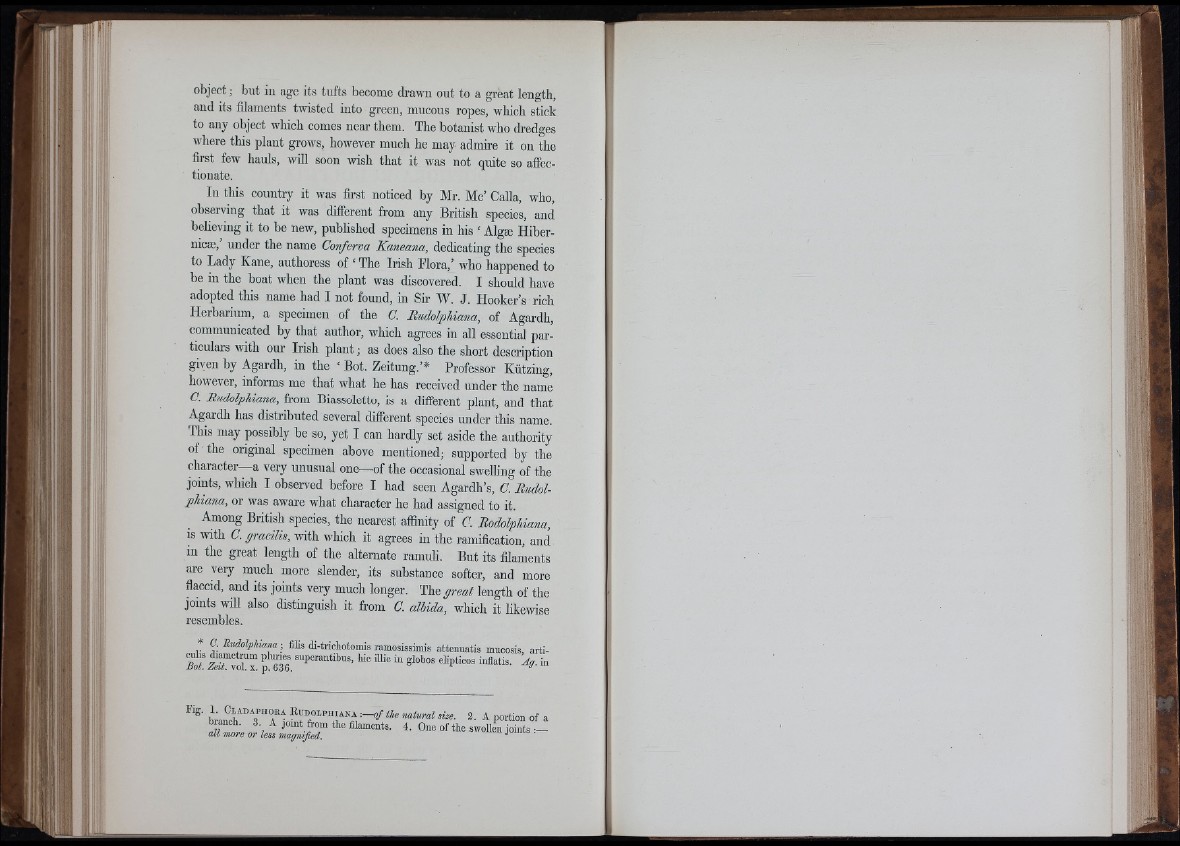
,iî ;
■ H /
ir- f ■ i il
m
iJi
; 'é
iiri
:‘'iî
I
object ; but ill age its tufts become dravra out to a great length,
and its filaments twisted into green, mucous ropes, which stick
to any object which comes near them. The botanist who dredges
where this plant grows, however much he may admire it on the
first few hauls, will soon wish that it was not quite so affectionate.
In this country it was first noticed by Mr. Me’ Calla, who,
observing that it was different from any British species, and
believing it to be new, published specimens in his ‘ Algæ Hiber-
nicæ, under the name Conferva Kaneana, dedicating the species
to Lady Kane, authoress of ‘ The Irish Flora,’ who happened to
be in the boat when the plant was discovered. I should have
adopted this name had I not found, in Sir W. J. Hooker’s rich
Herbarium, a specimen of the C. KudolpJdana, of Agardh,
communicated by that author, which agrees in all essential particulars
with our Irish plant ; as does also the short description
given by Agardh, in the ‘ Bot. Zeitung.’* Professor Kützing,
however, informs me that what he has received under the name
C. Mudolphiana, from Biassoletto, is a different plant, and that
Agardh has distributed several different species under this name.
This may possibly be so, yet I can hardly set aside the authority
of the original specimen above mentioned; supported by the
character—a very unusual one—of the occasional swelling of the
joints, which I observed before I had seen Agardh’s, C. Eudol-
pJiiana, or was aware what character he had assigned to it.
Among British species, the nearest affinity of C. Bodolphiana,
IS with C. gracilis, with which it agrees in the ramification, and
in the great length of the alternate ramuli. But its filaments
are very much more slender, its substance softer, and more
flaccid, and its joints very much longer. The great length of the
joints will also distinguish it from C. albida, which it likewise
resembles.
* a BadolpMana ; fiHs di-trichotomis ramosissimis attenuatis mucosis, arti-
p inflatis. J g . in
Fig. 1. C l a d a p h o e a E u d o l p h i a n a -.— o f the natural size. 2. A portion of a
branch. 3 A joint from the filaments. 4. One of the swoUen I t s -
all more or less magnified.